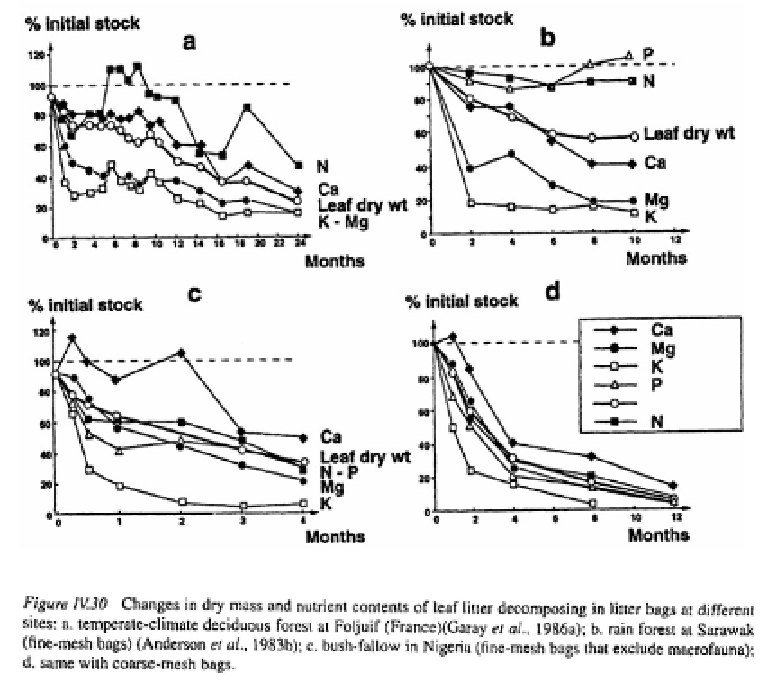Agriculture Reference
In-Depth Information
In a rainforest in Sarawak, P and N were immobilised over a 10 month experimental
period, emphasising the effects of P and N limitations on decomposition processes
(Figure IV.30b) (Anderson
et al.,
1983b). In a Nigerian bush-fallow Ca appeared to be
the most limiting nutrient (Swift
et al.,
1981); during the first few months Ca was strongly
immobilised whereas P and N were regularly released. Decomposition rates in litter bags
varied with mesh size. In fine mesh bags, relative confinement and the exclusion of large
invertebrates resulted in reduced rates of release of all nutrients, except for K which is
highly mobile and readily leached (Figure IV.30c). In an Amazonian rainforest, Cornu
et al.
(1997) showed that mineral elements that are not actively taken up by plants
(Fe, Si, Al, Ti) tend to accumulate in decomposing litter.
There is some evidence that, if all other constraints (climatic, edaphic, litter quality)
are satisfied, nutrient availability in soil is the main regulator of decomposition rates in
the early phases. In the later stages of decay, lignin, lignocellulose and probably
phenol:protein complexes emerge as limiting factors (Berg and Staaf, 1980; Gourbière,
1982; McClaugherty and Berg, 1987).

